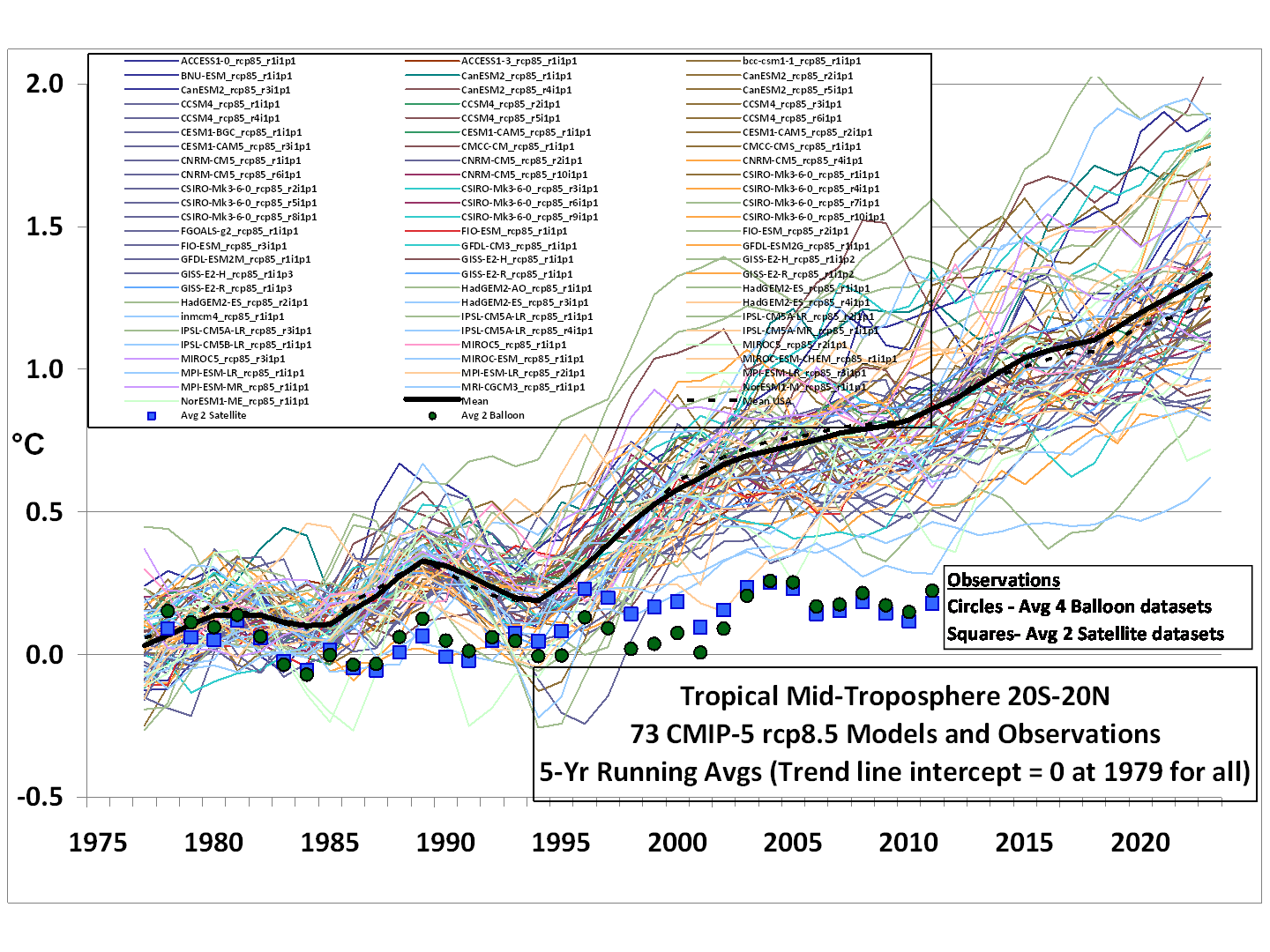From the latest edition of the NIPCC Report:
In a paper published in Nature Climate Change, Knutti and Sedlacek (2013) write that "estimates of impacts from anthropogenic climate change rely on projections from climate models," but they say that "uncertainties in those have often been a limiting factor, particularly on local scales." However, as they continue, "a new generation of more complex models running scenarios for the upcoming Intergovernmental Panel on Climate Change Fifth Assessment Report (IPCC AR5) is widely, and perhaps naively, expected to provide more detailed and more certain projections." But are these expectations really being met?
Exploring the subject for themselves, the two researchers performed what they described as "a first comparison between projections from CMIP3 and CMIP5," in order to see to what extent real progress in the modeling of Earth's global climate may have been being made. And what did they find?
In the words of Knutti and Sedlacek:
Exploring the subject for themselves, the two researchers performed what they described as "a first comparison between projections from CMIP3 and CMIP5," in order to see to what extent real progress in the modeling of Earth's global climate may have been being made. And what did they find?
In the words of Knutti and Sedlacek:
(1) "Projected global temperature change from the new models is remarkably similar to that from those used in IPCC AR4 after accounting for the different underlying scenarios."
(2) "The local model spread has not changed much despite substantial model development and a massive increase in computational capacity."
(3) "There is ... little evidence from CMIP5 that our ability to constrain the large-scale climate feedbacks has improved significantly."
(4) "Model mean patterns of temperature and precipitation change ... are remarkably similar in CMIP3 and CMIP5."
(5) "Robustness over land is slightly higher but also similar in CMIP3 and CMIP5," which fact they describe as "troublesome."
(2) "The local model spread has not changed much despite substantial model development and a massive increase in computational capacity."
(3) "There is ... little evidence from CMIP5 that our ability to constrain the large-scale climate feedbacks has improved significantly."
(4) "Model mean patterns of temperature and precipitation change ... are remarkably similar in CMIP3 and CMIP5."
(5) "Robustness over land is slightly higher but also similar in CMIP3 and CMIP5," which fact they describe as "troublesome."
In light of these findings, therefore, and "if the past is a guide to the future," as the two researchers put it, "then uncertainties in climate change are unlikely to decrease quickly, and may even grow temporarily." And they further state that they "have illustrated this for seasonal temperature and precipitation," while adding that "it is likely that impact-relevant predictions, for example of extreme weather events, may be even harder to improve."
So ... meet the new models, which are nearly the same as the old models -- struggling in their ability to accurately simulate the Earth's climate.
Reference: Knutti, R. and Sedlacek, J. 2013. Robustness and uncertainties in the new CMIP5 climate model projections. Nature Climate Change 3: 369-373.

No comments:
Post a Comment